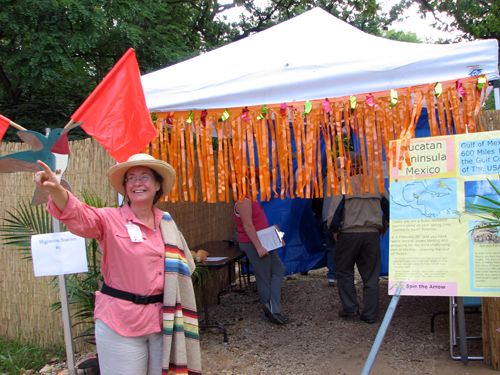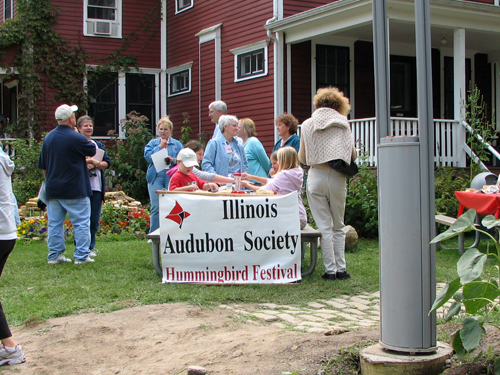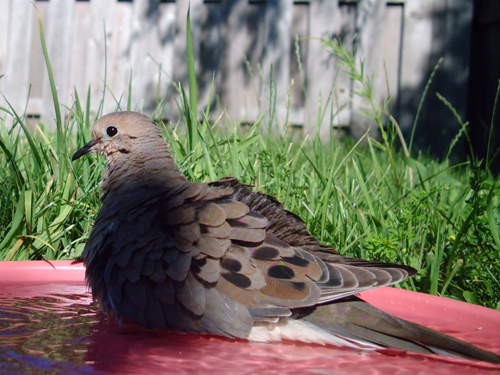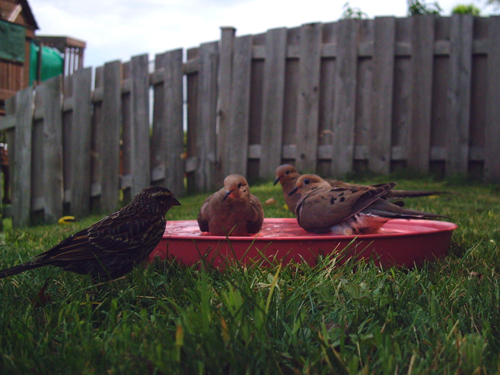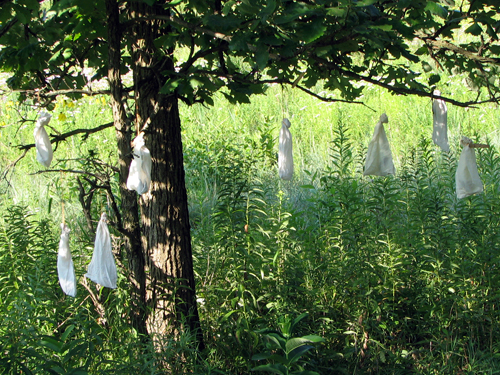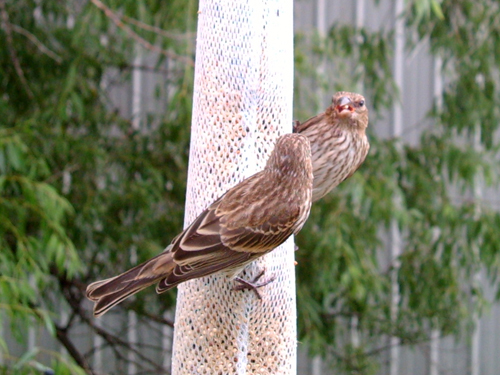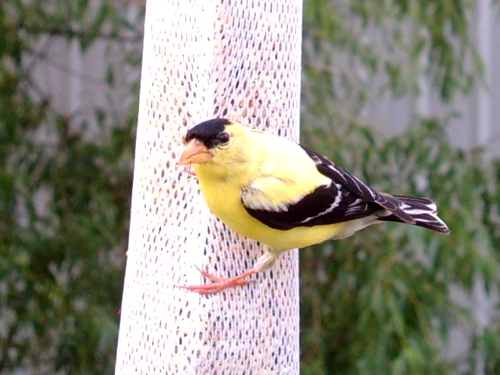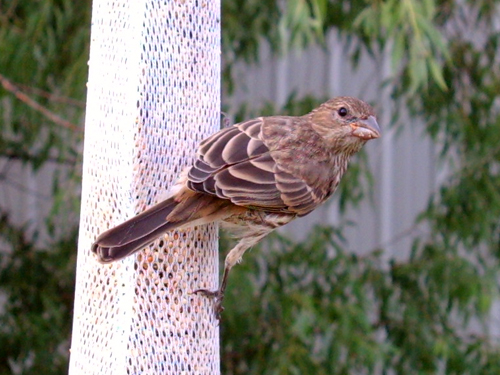Capturing fast fliers
As we were migrating to Camp Sagawau, we heard that Vern Kleen was starting his talk on hummingbirds. When we arrived, there was already a crowd of hummfans listening to Vern.

Vern Kleen is one of two licensed hummingbird banders in Illinois. Throughout the summer he has conducted banding demonstrations – after the last fest on September 5th he will have done sixteen hummingbird festivals throughout Illinois!
Vern told us all about hummingbirds, from banding and how to attract hummingbirds to back yard feeders to facts & figures and all about hummingbird behavior, as well as taking questions from the crowd. We learned that there are approximately 340 species of hummingbird. 25 of these have been seen in the United States, but just the Ruby-throated is a regular in eastern North America. Ecuador is home to over 160 different species!
As Vern was speaking, members of Illinois Audubon were busy with two hummingbird traps. Normally there are 10+ hummingbird feeders set up at Camp Sagawau, but during the festival they were all removed except for two which were used for trapping the hummingbirds for banding. Spectators watched the feeders, waiting for a bird to fly inside. The traps are hanging on either side of the large tree just left of center:
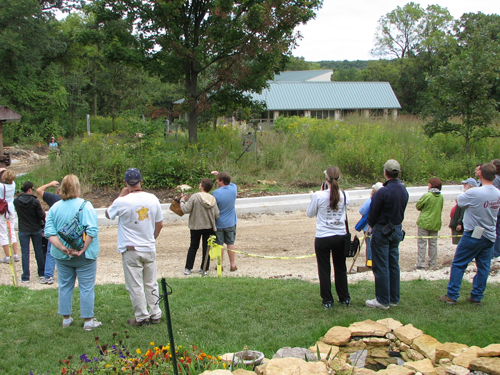
The doors on the mesh traps were rigged to close on a remote control similar to remote lock devices for cars. Here’s a closer look at an open trap:

Because there were normally so many feeders at the preserve, there was no shortage of hummer activity. However, the trappers had to be careful and not trip the door until the bird perched on the feeder. Hummingbirds flap their wings up to 100 times per second and fly 25-30 miles per hour on average. Male birds can reach speeds of nearly 60 mph during courtship display dives!
Once the bird entered the trap and was actually perched on the feeder inside, the chance of them flying into the trap door as it was closing was greatly reduced. Here’s a male bird (notice the ruby throat) caught in one of the traps:

After capturing a bird in the trap, the next step was to remove the bird from the trap. A net ‘sleeve’ allows the trapper to get his or her hand into the cage without the bird escaping. Still, it’s a delicate procedure and patience is needed in order to avoid extra stress on the bird. Here’s a video of a bird being removed from the trap:
Next, banding a hummingbird!



